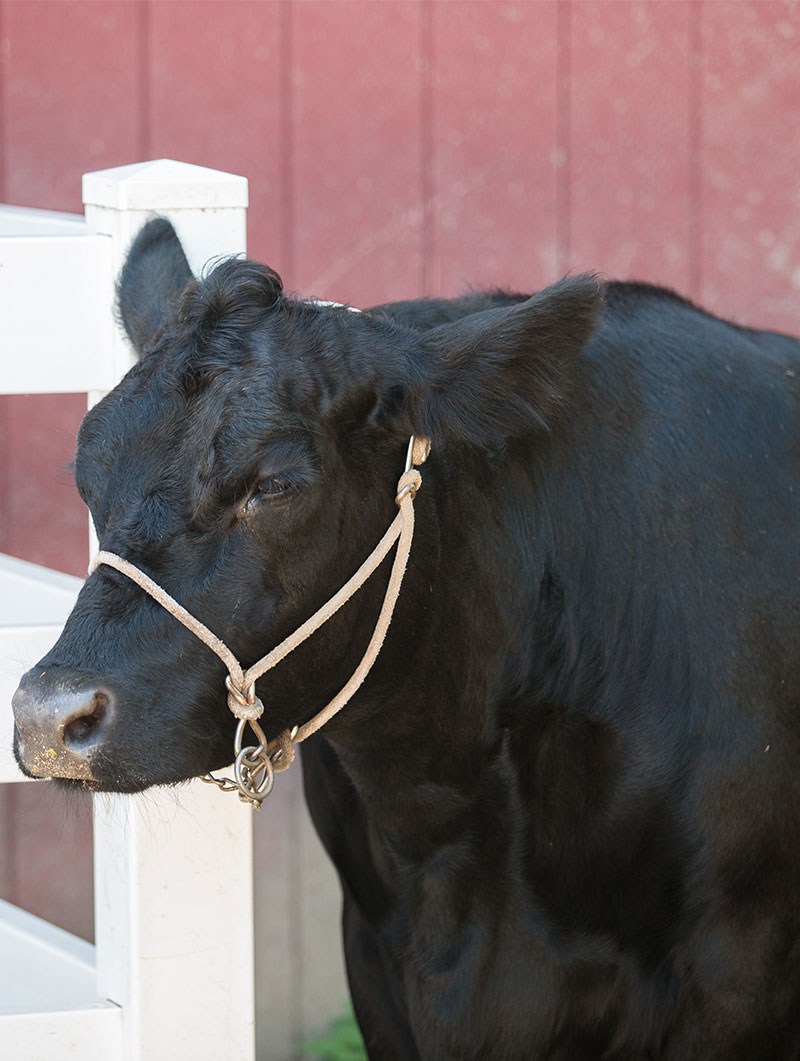Black Angus cow (“Penelope”)
Bos taurus taurus angus
Description:
The black Angus is a large polled (hornless) breed of beef cattle with a solid black color and a short, compact body.
Size:
The Angus is relatively short in stature compared to other cattle breeds. Average market weight is 1000-1300 pounds (453.6-589.7 kg).
Adaptations:
Cattle are ruminants (animals with four-chambered stomachs). When they first eat their food, they chew very little. This partially chewed food is swallowed and enters the first part of the stomach (rumen). Then the food is regurgitated into the mouth, where it is more thoroughly chewed. This is called “chewing the cud”. The food then passes through the remaining three stomach parts for complete digestion.
Diet:
The diet of beef cattle consists of grain and hay. Although they are heavier than dairy cattle, beef cattle are fed less because they do not have the high-energy needs of a milk-producing cow.
Reproduction:
Calving typically occurs in the spring. After a nine-month gestation, a cow gives birth to one calf. Twins are rare. Calves are generally kept with the mother until weaning age, which is four to five months.
Shelter and space needs:
Cattle have a reasonably high tolerance for cold weather, although they do need to be provided with shelter from extreme conditions. Penelope has a stall inside the barn where she spends the night and an outdoor yard which she shares with Cosley Zoo’s dairy cow during the day.
Life expectancy:
Cattle have the potential to live 10-12 years.
Relationship with man:
Black Angus beef cattle are popular with ranchers due to their ease of keep and large amount of meat produced. Numerous byproducts can also be made from the bone, hooves, hide, hair, and fatty acids. These byproducts include gelatin, film, baseball gloves, shampoo, cosmetics, and crayons.
Fun Facts:
- The black Angus breed originated in Scotland in the mid-1800s.
- Producers can use 98% of the bodies of beef cattle, either for meat or other byproducts.
- The sports of baseball, football, soccer, volleyball, and basketball all depend on cattle products – cowhide is used to make the balls! (Although a football is commonly called a “pigskin”, it is made from cattle leather).
- Beef cattle produce a lot of meat – one animal can provide enough ground beef for 1,500 quarter-pound hamburgers!






